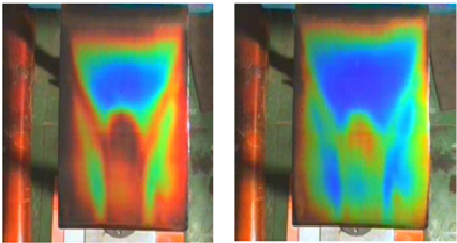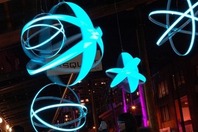Technology
Although the dominant view to technology is optimism, but there are some evidences that casts doubt it. Here are three examples that demonstrate this point :
1- Changing the models (curves) of supply – demand: Studies show that use of the CFLs in the UK has led to increased power consumption in lighting sector. This situation can be explained by economic theory of “William Stanley Jevons” . According to this theory, technological change leads to changes in the supply and demand curves. In other words, the demand curve of lumen (lighting flux) changes due to the cheaper price of the lumen so that the final consumption increases. Thus, the electric utilities which switch from incandescent lamps to CFLs and LEDs lighting technology to reduce power consumption in the coming years, will be quite disappointed.
2- Changes in construction presuppositions: About two month ago, when the IEEE-519 2014 standard was published, electrical equipment manufacturers and power system operators were amazed; because the limit of THDV increased from 5% to 8% to respond the development of renewable generation technologies. Thus a large variations in the design and manufacturing of electrical equipment in order to improve the electromagnetic compatibility, expected. Also it can be predict that meters manufacturers in the worldwide create more pressure on IC manufacturers to change their energy measurement model based on IEEE 1459–2010 standard. This standard follows the instantaneous power theory of Alexander Eiegeles Emanuel instead of the of Bodeanu’s power theory. With this action of IEEE power quality work group, it can be expected that the limit of THDV increase to 20% until 2020. With such amount of harmonic distortion, the overall philosophy of the design and operation of power systems, in the demand, generation, transmission and distribution sides will change.
3-Information overload: Smart grids is based on data more than anything else. The role of the data in engineering systems can be analogized with the role of vitamins in biological systems. Excessive data, beyond the management capability of these systems, transforms to the load of system and prevents the flexible performance of it. The cost of building and maintaining data centers, as well as cyber security for information systems is very high and so the lack of value-added production makes these systems useless overload. Thus, the development of smart grids without having an effective strategy in benefiting from value-added (such as improving utilization and increase the life of electrical equipment), may tends to electric utilities bankruptcy.
CFLs, electricity utilities bankruptcy, IEEE 1459–2010, Information overload, LEDs, power quality, smart grids, standard, supply - demand, technology, THDV, William Stanley Jevons
more...
“Over-heating” is one of the major causes of malfanction and damaging of electrical equipments. Specially, considering expensive electrical equipments such as generators, motors and transformers, reveals that by proper “temperature monitoring” of these electrical equipments, we can avoid a lot of unexpected costs.
“Chromogenic polymers” are a general group of polymers which are “excitation-respective”. A cathegory of “chromogenic polymers” are “thermo-respective polymers” which their color change in response to the temperature variations. “Thermo-respective polymers”, have two main cathegories which are “thermo-chromic” and “thermo-tropic” polymers.
“Thermo-chromic” polymers are a kind of “LCPs” (Liquid Crystal polymers) which also named as chiral nematics and can show a vast and high resolution color spectrum in response to the temperature changes.

Application of these special polymers as the “painting cover” of expensinve electrical equipments* may increase reliability of power systems and reduce the operational costs of industries. These special paints are named “smart paints” and is expected to be used in “smart grids”.
* Comparing “smart paints” and “fixed thermo-graphic cameras” is a separate subject that is investigated in my book “survey of electrical contacts in power systems-ISBN : 978-964-8479-59-1”.
Chromogenic polymers, excitation-respective polymer, LCP, Liquid Crystal polymers, smart grids, smart paints, survey of electrical contacts in power systems, Temperature Monitoring with chromogenic polymeric covers, thermo-chromic, thermo-graphic cameras, thermo-respective polymers, thermo-tropic
more...
The picture of the future power industry may be very different from that we imagine. The power industry probably will change totally in a decade. The extraordinary progress of polymer science may has an important role in this massive change. It is not far from reality to imagine a world where the power lines and ground wires, lighting bulbs, turbine blades, batteries, electrical equipment frames, panels paintings, advertising lights, fuel cells, substation enclosures , … change to polymers. So , power lines and ground systems which are made from conductive polymers will not be degraded by the exposure to the corrosion and oxidation.

Polymeric photo-luminescent lights for advertising
Why go so far? Which electrical engineer could imagine polymeric fuses? Re-settable fuses which are innovated by “Tyco Electronics Corporation” does not need to be replaced at all. The resistance of these fuses increases when the current exceeds the nominal rate and tend to infinity. When the current gets its normal conditions, then fuse recovers its normal conductivity again. On the other hand, smart polymeric sensors will be an inseparable part of any smart grid. The polymeric sensors of temperature, voltage, PH, moisture and … are sensitive, reliable and appropriate sensors that doesn’t need to any external supply. Supplying sensitive electronic sensors in proximity of high power networks is a challenge for implementing of any smart grid. The intrinsic properties of Thermo-respective, Photo respective, photo-luminescent, electro-luminescent, Ph-respective, shape-memory and other smart polymers make a great potential for making a modern polymeric power industry.
electro-luminescent, extraordinary progress of polymer science, Future of Power Industry, ground wires, Ph-respective, Photo respective, photo-luminescent, polymeric batteries, polymeric electrical equipment frames, polymeric lighting bulbs, polymeric turbine blades, Polymers, power lines, Re settable polymer fuse, Re-settable, Re-settable fuses, shape-memory polymer, smart grid, Thermo-respective, Tyco Electronics Corporation
more...
Visual display units technology (VDUs) are progressing with an incredible speed. From the time that man could transmit voice over the phone virtually, one hundred and thirty years have been passed. Now, human counts for transmitting of his virtual image. The image that does not make any sense of being unreal. Thanks to the advanced technology of smart and three-dimensional screens, it seems that in less than one decade it will very hard to distinguish real humans from their virtual images (or virtual presence).
Imagine a world where instead of actual attendance at a meeting in a far city, send your virtual presence to there …. A world with less risks, less difficulties and higher efficiency …
Imagine a world where centralized hospitals changes to a large number of reception rooms with an intelligent and virtual examination system which are equipped with advanced laboratory equipments and will be operated with only one technician.
Doctors examine patients through virtual presence and different types of images, such as MRI, Sonography, X-ray and … will be investigated by virtual presence of several specialists.
In this way, consecutive visits of patients to different doctors and hearing opposing views can be avoided.
Thanks to the high resolution (HD) and large three-dimensional screens, the human brain can not distinguish a virtual image from its real. World that already have experienced it through the mirage phenomenon …
Imagine a world where you are surrounded by the masses of smart particles at the nanoscale. This smart particles are a series of wireless sensors that gather various information about the world, and transmit it to the control center.
Each of these particles contain one or more sensors, a wireless telecommunications system, a rechargeable energy source which is augmented by the radio waves and an identification code (for fixed particles) or a GPS system (for moving particles). Such a structure is called Smart Dust. Consider, for example, smart dust that spread across the highway and transmit a variety of information such as light intensity and traffic to the control center. By Benefiting from this system, electricity utilities can quickly identify a faulty bulb and replace it. Or light density over road can be set depending on traffic.
As another example, smart sensors, which are scattered in a huge multi-storey car park can detect empty parking and send information to the control center. So, each car can be led to nearest empty parking by turning on pilot LED lights.
Or smart dust that spread over a bridge, can transmit oxidation rate, PH of water, corrosion rate and … to the control center.
Such a world is called a smart dust based world. In this world, doctors can control performance of critical parts of patient’s bodies by prescription of breathing or drinking the air or water which contains smart dust. This technology is the start of a new era of human control over the surroundings and an unlimited number of ideas to facilitate human life. Facilities that one day humans will be difficult to imagine life without it.

